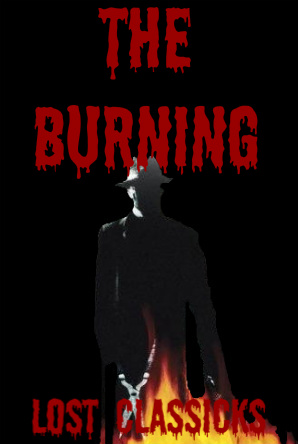
Director: Tony Maylam
Writers: Harvey Weinstein, Tony Maylam, Brad Grey
Starring: Brian Matthews, Leah Ayres, Brian Backer, Larry Joshua
Of all the slasher movies to be released throughout the golden era of the subgenre (1980-1983), few fell foul of as much controversy as the 1981 camp splatter classic The Burning; a sleazy and gruesome affair that has since developed a devoted cult following. Banned in the UK and forced to undergo severe cuts in most other countries, The Burning was the first feature by wannabe filmmaker siblings Harvey and Bob Weinstein, who would later form the successful production company Miramax before moving onto Dimension Films. Released almost a year to the day after a similar summer camp slasher, Friday the 13th, and boasting the same legendary FX artist, The Burning would also be the springboard that many future Hollywood players would leap from. The birth of what was to become The Burning began with Tony Maylam, a documentary filmmaker who had made two music features, White Rock and Genesis, that were screened as a double bill. These attracted the attention of rock promoter Harvey Weinstein, who had been working under the banner Harvey & Corky in Buffalo, New York, who purchased the films and distributed them theatrically as Sensasia. Desperate to make the transition to motion pictures with his brother, Bob, he approached Maylam about the possibility of developing a low budget movie.
It had become a common theory at that time that the easiest and most successful way to break into the film industry was to make a horror film. John Carpenter had managed it with Halloween, Don Coscarelli had done the same with Phantasm, and the Weinsteins knew they had to follow suit. The most simple premise was a killer stalking a bunch of teens. This had proved to be a winner on numerous occasions so the decision was made to develop the legend of Cropsy, an urban legend whose details seem to vary depending on which campfire you were around when the tale was told, but all revolved around a maniac stalking a summer camp, hacking up the counsellors one-by-one in hideously gruesome ways. Harvey and Maylam started work on the script, along with assistance from co-writer Peter Lawrence (based on a premise that the duo had created with Brad Grey, later a successful producer). Meanwhile, the brothers had to somehow finance the $1.5m needed to create the movie, as well as hiring a cast and crew that they could rely on. For their editor they hired Jack Sholder, who had re-cut many films for fellow independent company New Line, such as Sonny Chiba’s The Street Fighter and had penned his directorial debut, Alone in the Dark.
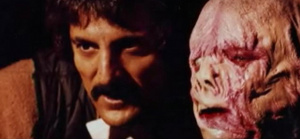
They knew if they were going to compete with the other horror movies on release (the early ’80’s saw a rise in the genre with the introduction of the home video) then they would need some kind of edge, and by the time The Burning was ready to go into production FX artist Tom Savini had become a star for his groundbreaking work on Dawn of the Dead and Friday the 13th. Harvey Weinstein and Maylam flew out from New York to visit Savini, who would decline to the chance to work on Friday the 13th Part 2 to make The Burning instead.
As with all of the early ’80’s slashers, the cast was made up of relatively young and inexperienced actors, usually to keep costs down and avoid dealings with unions. In the lead role of Todd, one of the practical jokers responsible for the accident which would leave Cropsy horribly burnt and hungry for revenge, was Brian Matthews, later a regular on Days of Our Lives. As the genuinely creepy loner Alfred, the victim of bullying from certain kids and boasting a rather sleazy fetish for spying on young girls showering, was Brian Backer, who would go on to appear in such comedies as Fast Times at Ridgemont High and Police Academy 4: Citizens on Patrol. Future Seinfeld star Jason Alexander and Short Circuit‘s Fisher Stevens (who would portray Asian genius Benjamin, despite being a Caucasian American) also have supporting roles as Dave and Woodstock, respectively. Holly Hunter, who would go on to become an Academy Award winner, also had a minor role.
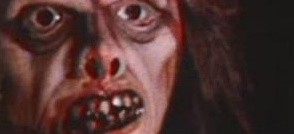
Filming commenced in upstate New York, around Buffalo and North Tonawanda and the climax would be shot in Model City, New York. Different crew members have different tales as to why the original intended setting, a cave system, was later scrapped – Savini claimed it as due to the caves collapsing whilst Maylam stated it was because of a bat infestation. Instead, they settled for an old, abandoned copper mine. Once completed, all that was needed was an effective score. Maylam approached Rick Wakeman, keyboardist for the hugely influential prog rock group Yes, who he had collaborated with on White Rock, to compose the music. Being classically trained and a truly gifted musician, Wakeman was able to create the soundtrack and deliver it to a suitably impressed director. It was only then that The Burning was ready to be unleashed.
Officially released on the 8th May 1981, then at the height of the slasher craze, The Burning was an instant favourite among the gore-hungry fans and Savini enthusiasts, desperate for more of what he delivered in Friday the 13th (which its sequel, released on week earlier, had failed to do). But not everyone was impressed with the level of violence on display. Embarrassed al allowing Friday the 13th through uncut, the MPAA (Motion Picture Association of America) had become very strict with regards to censoring slasher films, and ordered drastic cuts in order for the movie to receive its much-needed R rating. It would be a victim of far more severe treatment in the UK when Thorn-EMI unintentionally released the uncut version on VHS, which contained various effects that had been refused by the BBFC (British Board of Film Classification).
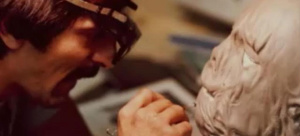
Seized under the Obscene Publications Act 1959, the film eventually found its way onto the Director of Public Prosecutions (DPP) list of ‘video nasties,’ many of which were prosecuted under the Video Recordings Act 1984. The main aspect of the movie which had caused such an outcry was the now infamous ‘raft massacre,’ located towards the end of the film where several of the characters had created a makeshift raft and were attempting to escape and find help, only for Cropsy to appear and brutally slaughter them all (with Woodstock losing his fingers from a pair of gardening shears). This handiwork of Savini’s would make the movie one of the most controversial slashers of the era and would result in it remaining cut in the UK until 2001, twenty years after its initial release.
Despite all the notoriety – or perhaps because of it – The Burning has remained a fan favourite among lovers of slasher films and stands as among Savini’s best work (outdone only by The Prowler). Similar in some aspects to Joe Giannone’s Madman, also released in 1981, this summer camp splatter classic has so far succeeded in escaping the Hollywood remake bandwagon (it would be somewhat ironic if the Weinsteins chose to revisit it after all these years) and has finally been granted an uncut DVD release, almost thirty years later.
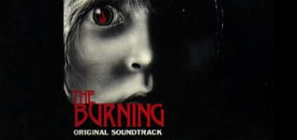

3 Responses to The Making Of The Burning (1981)